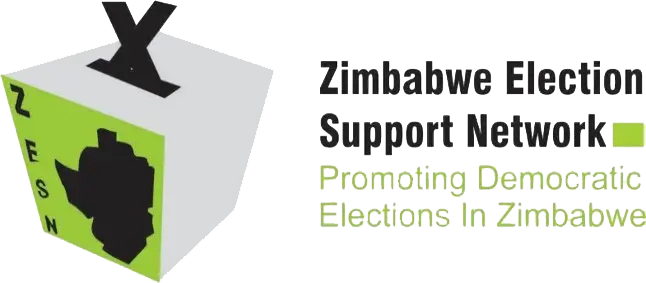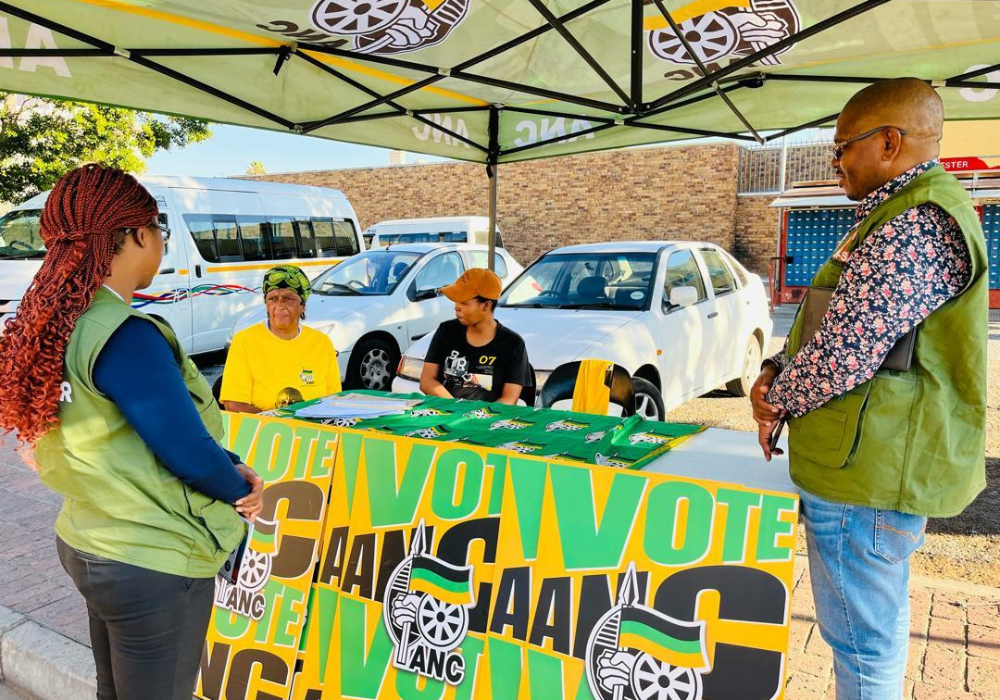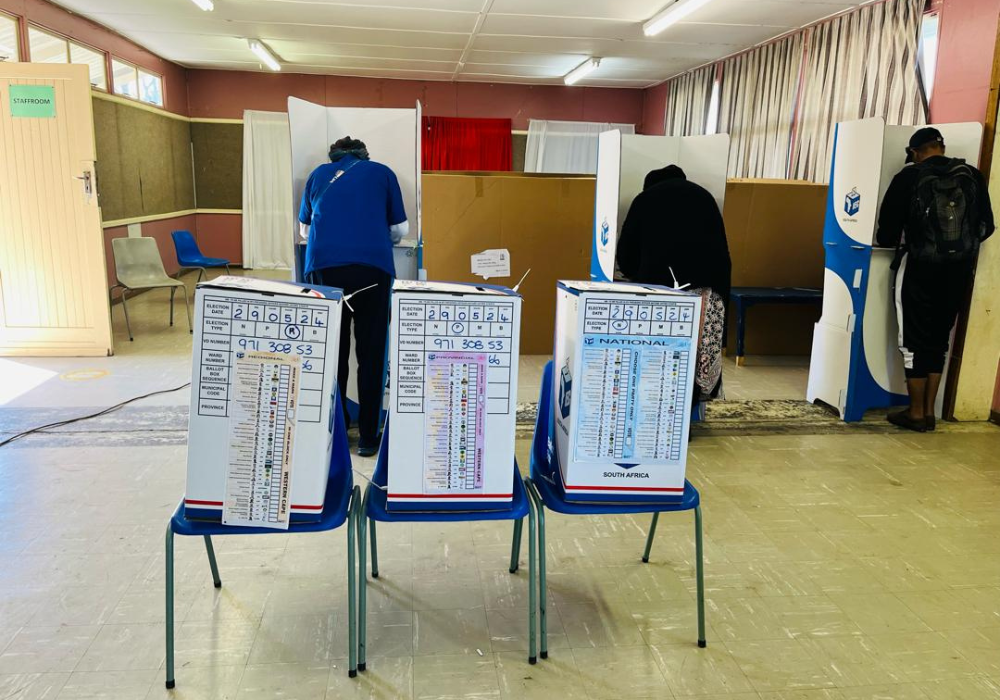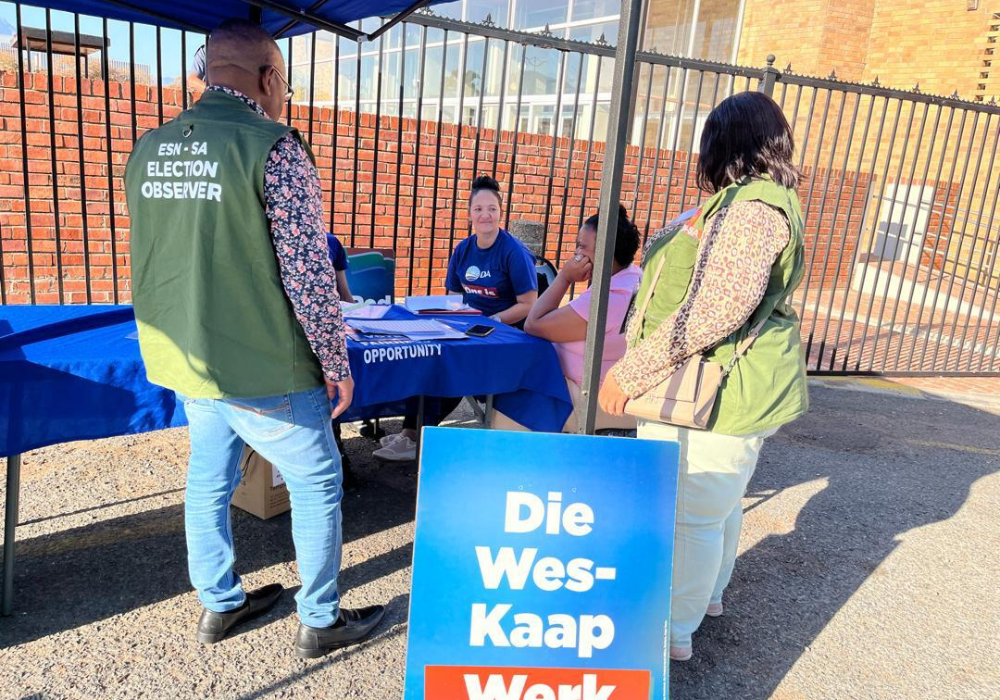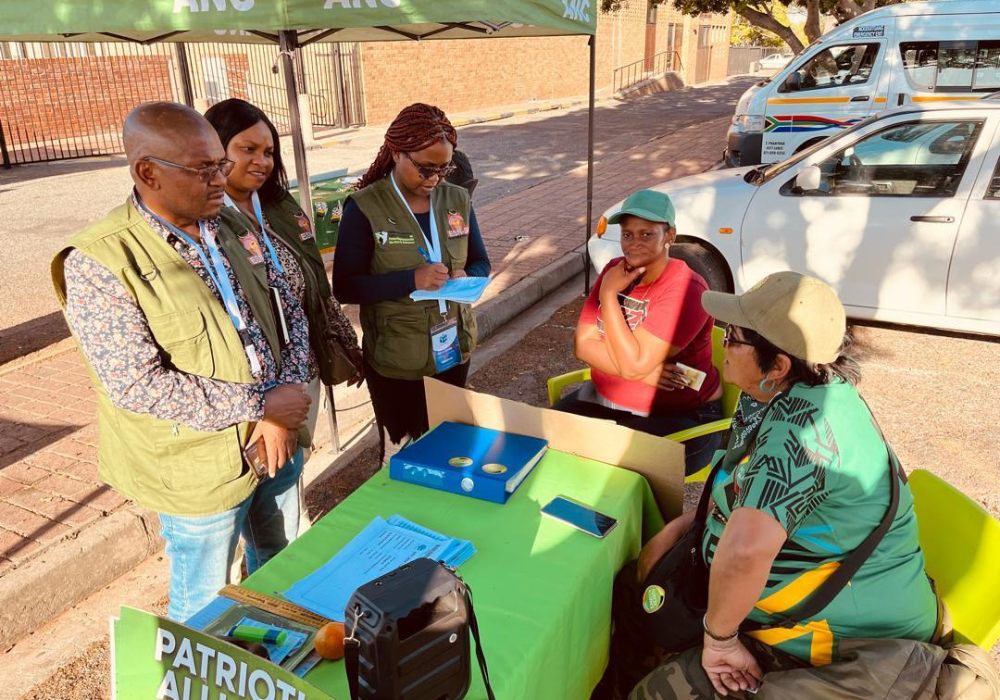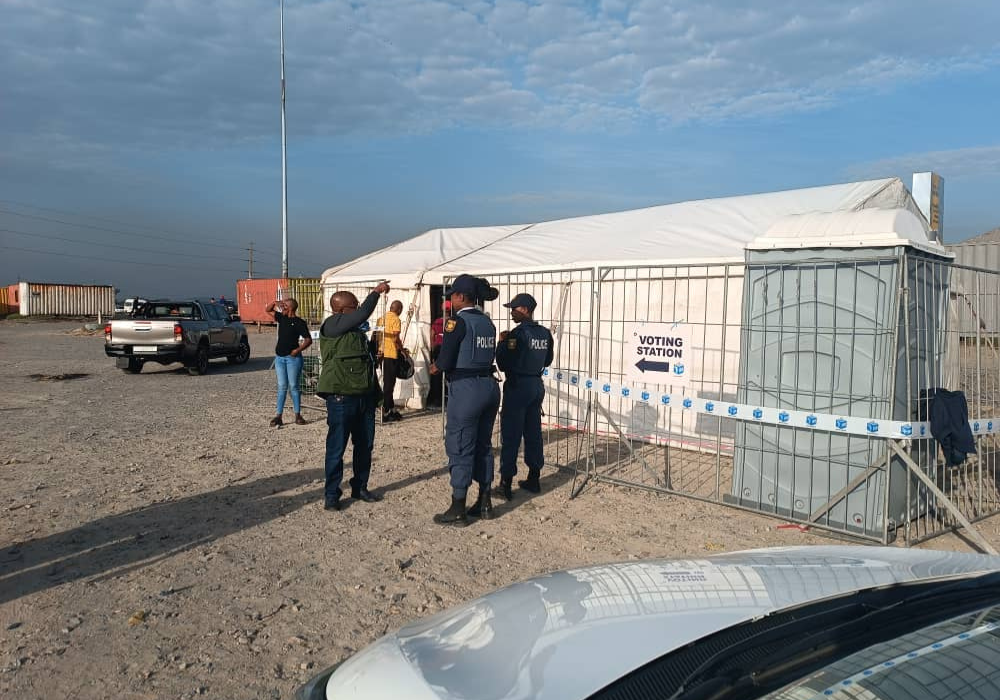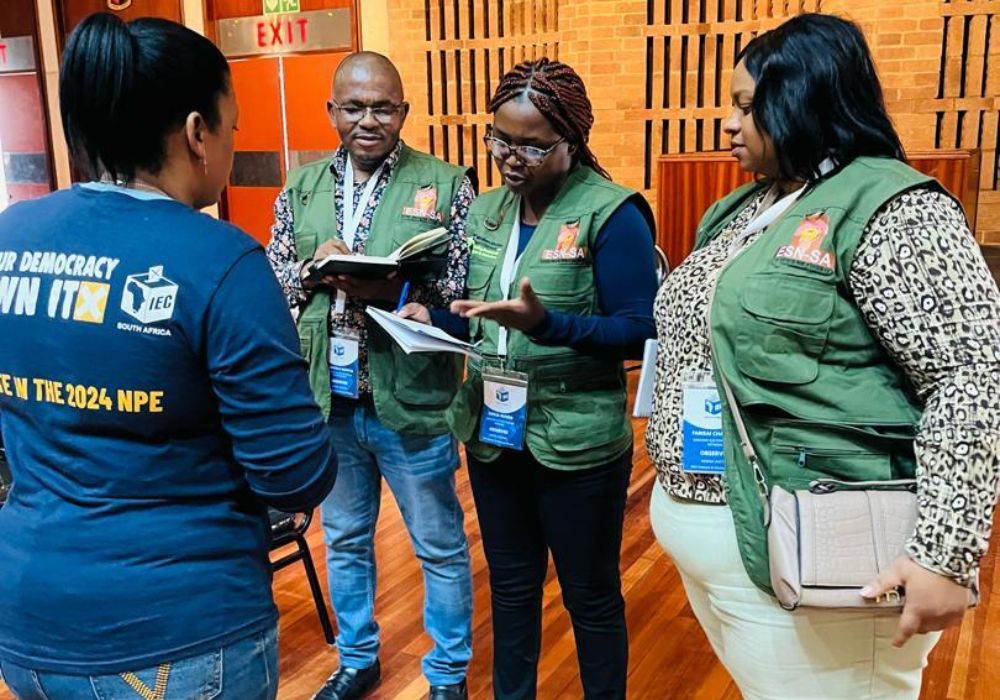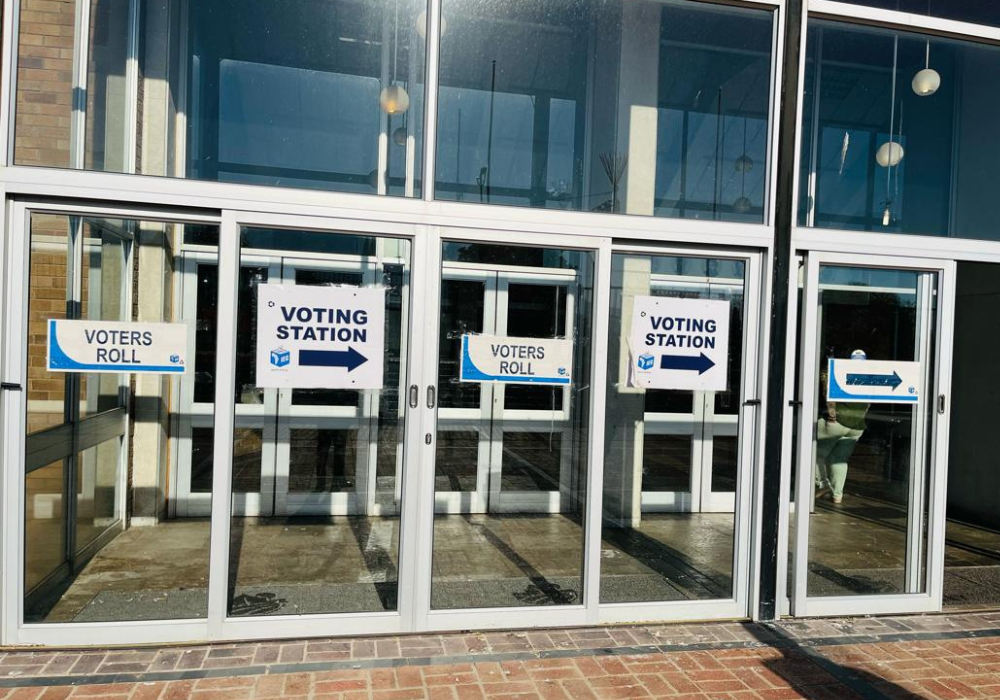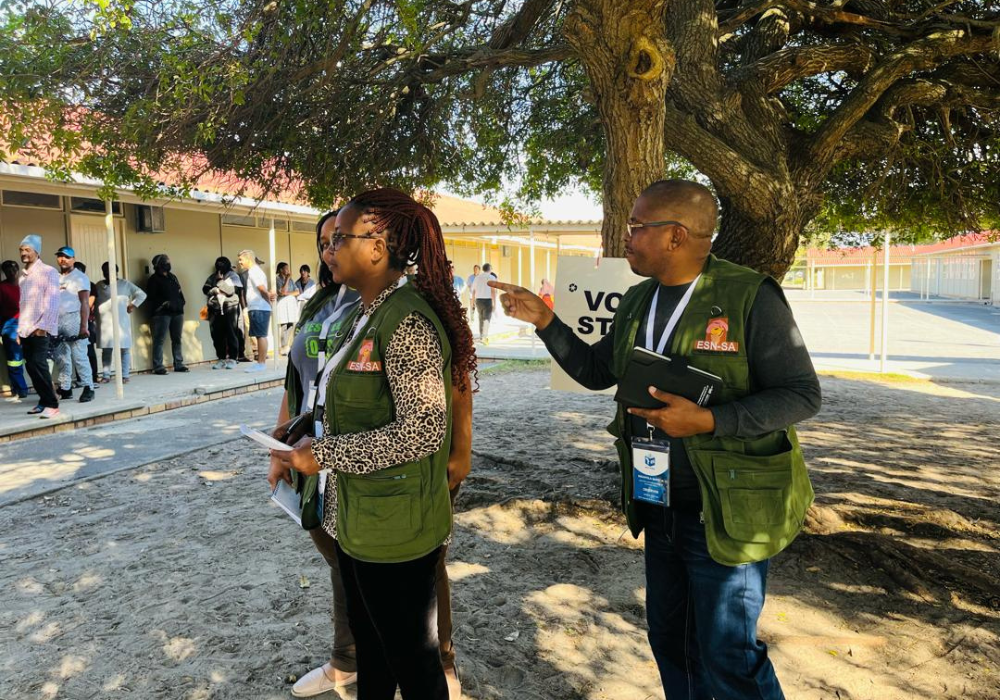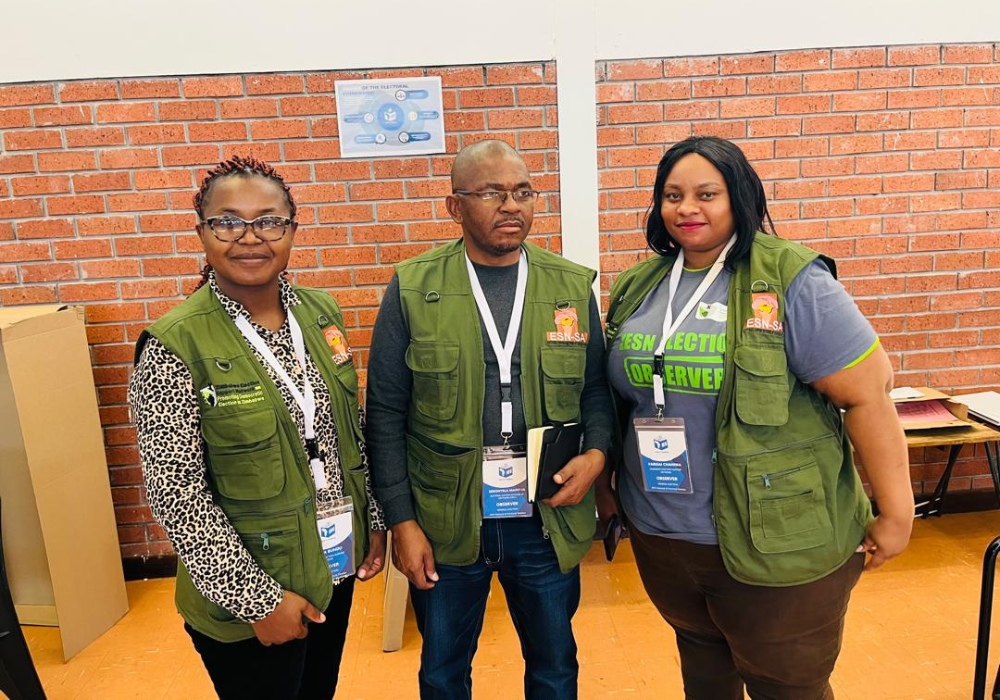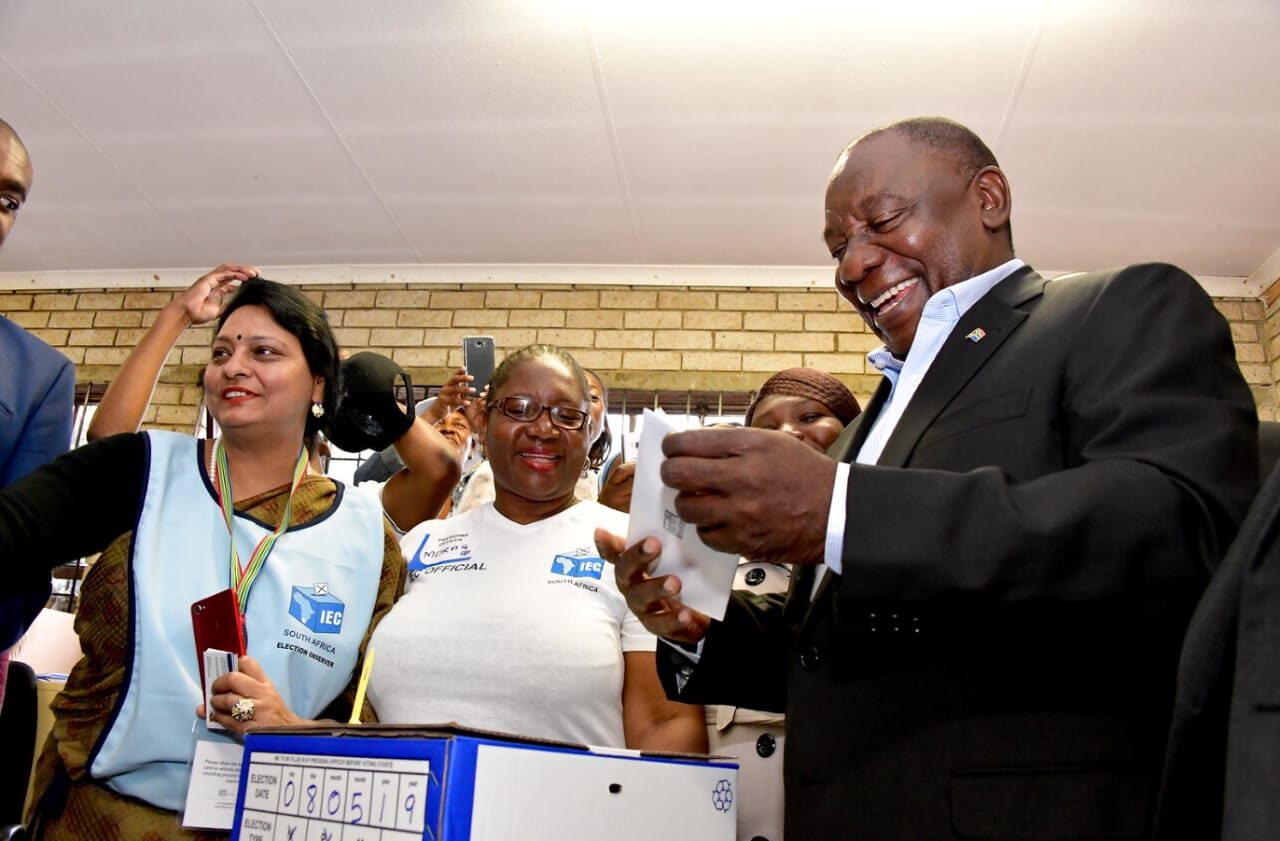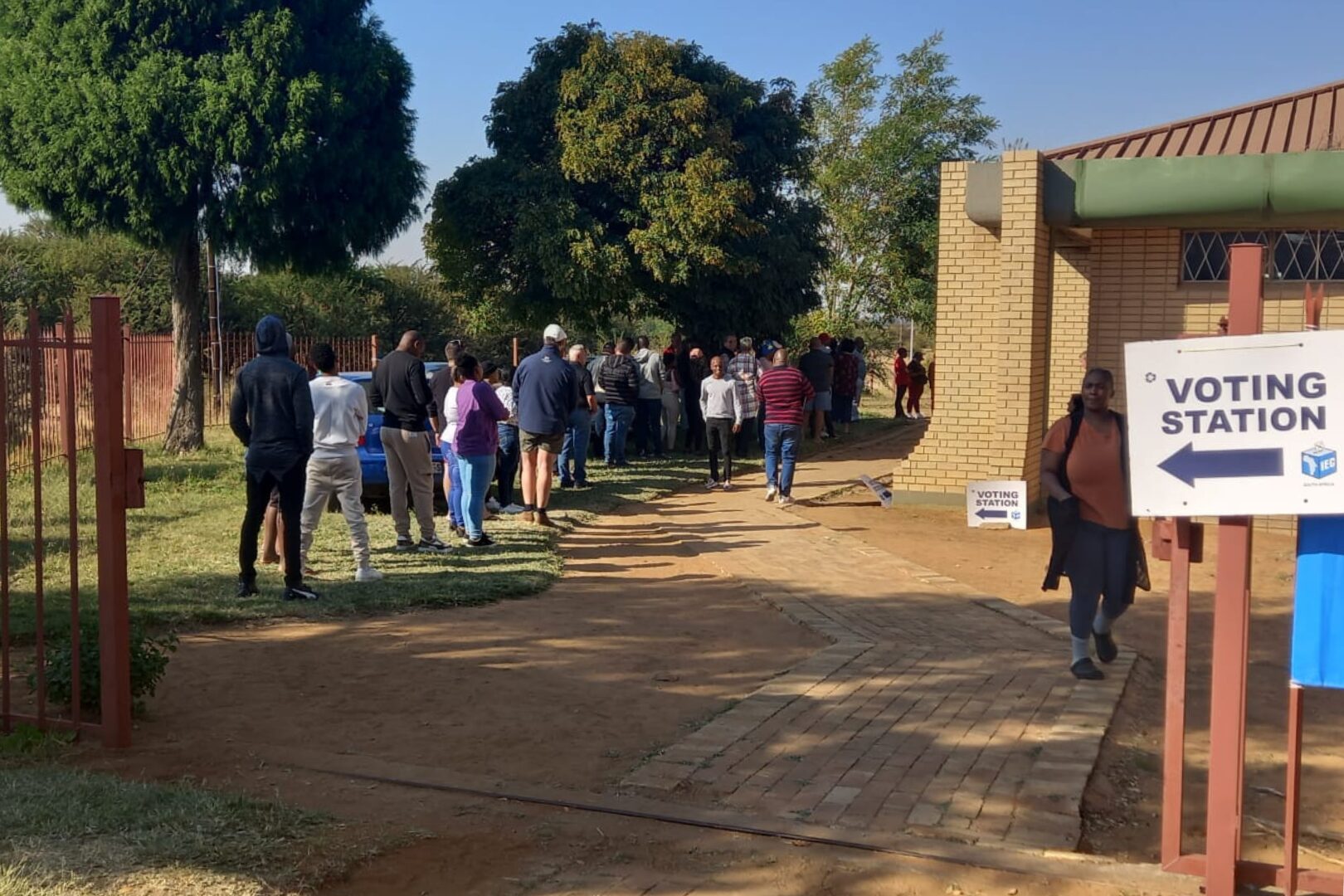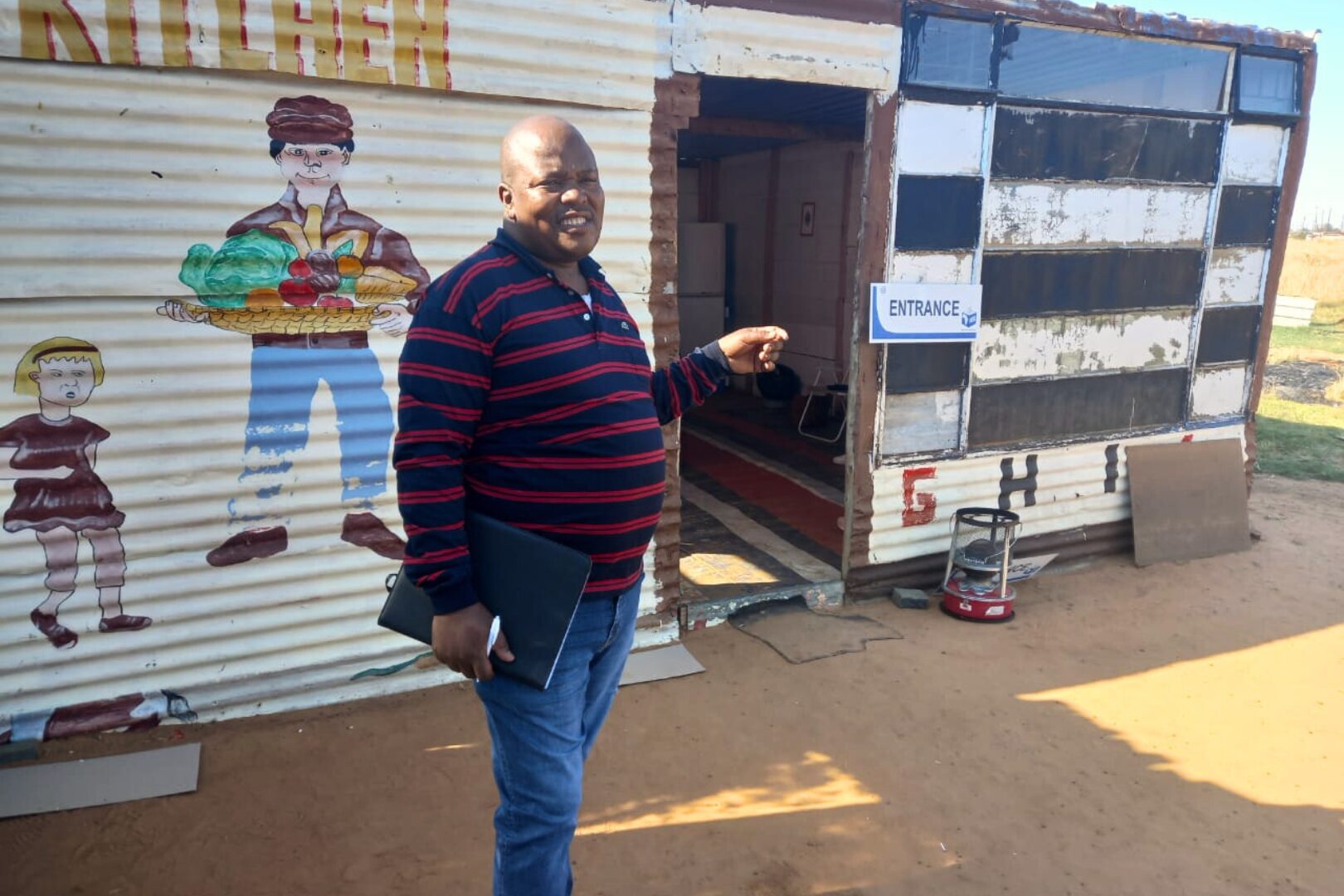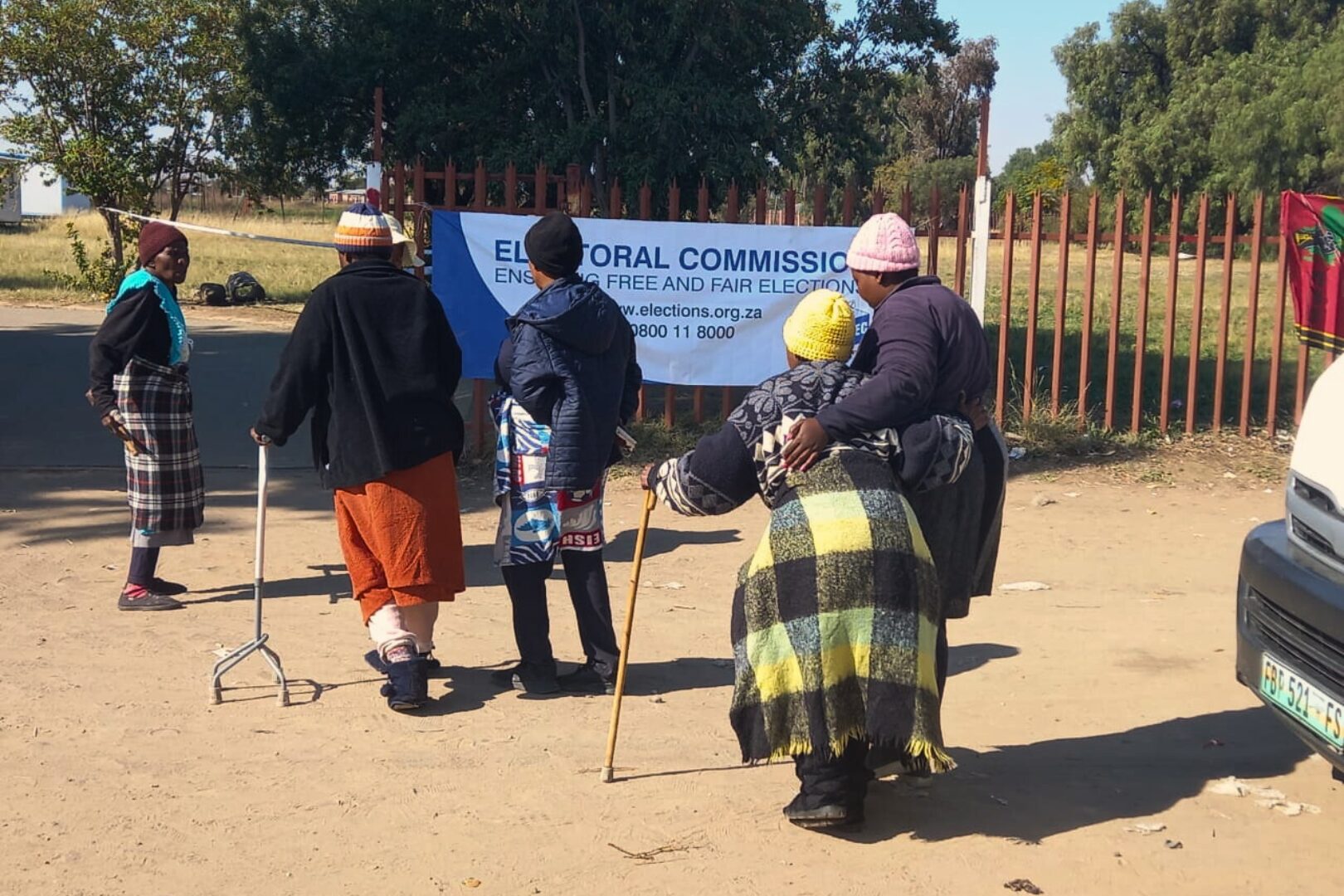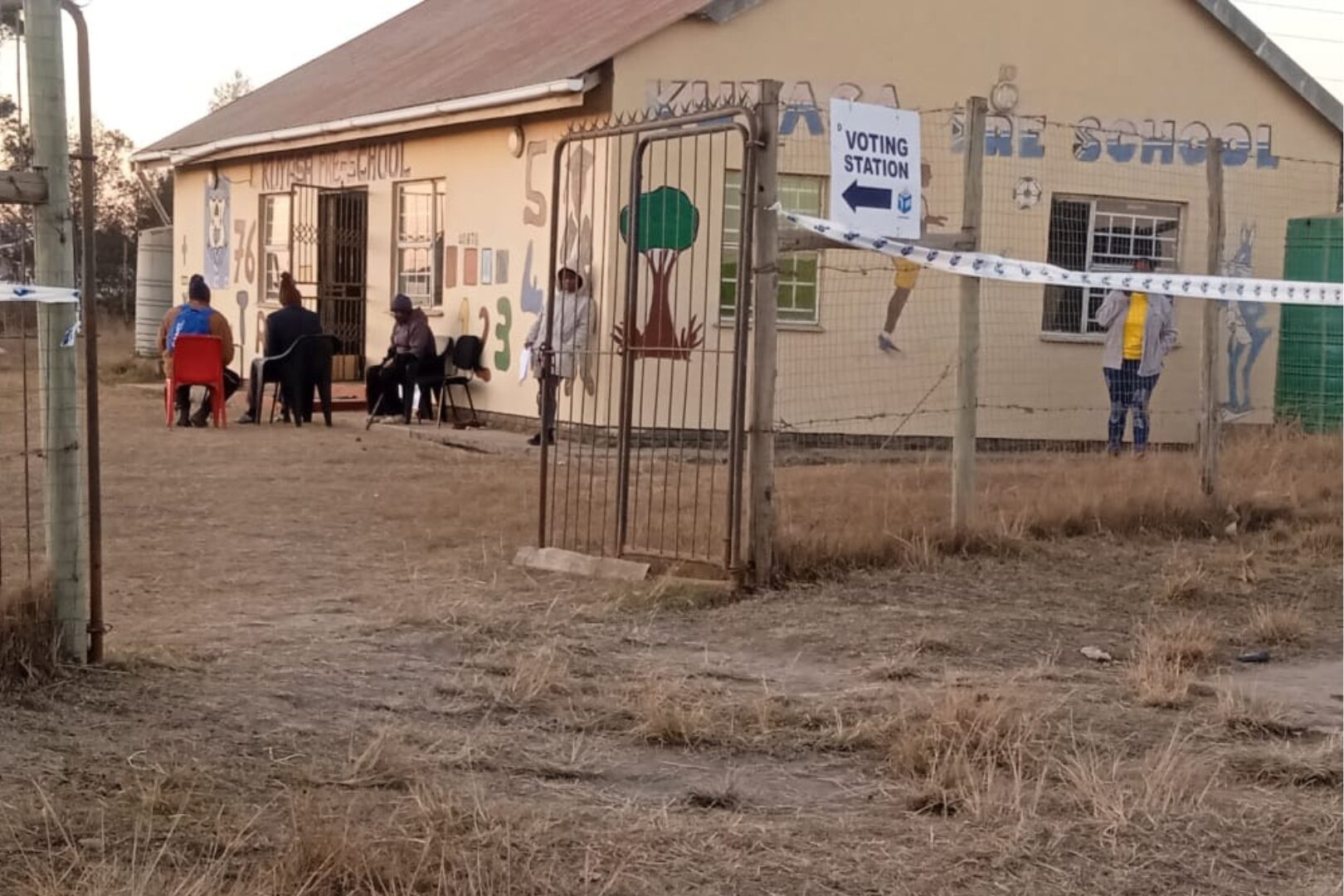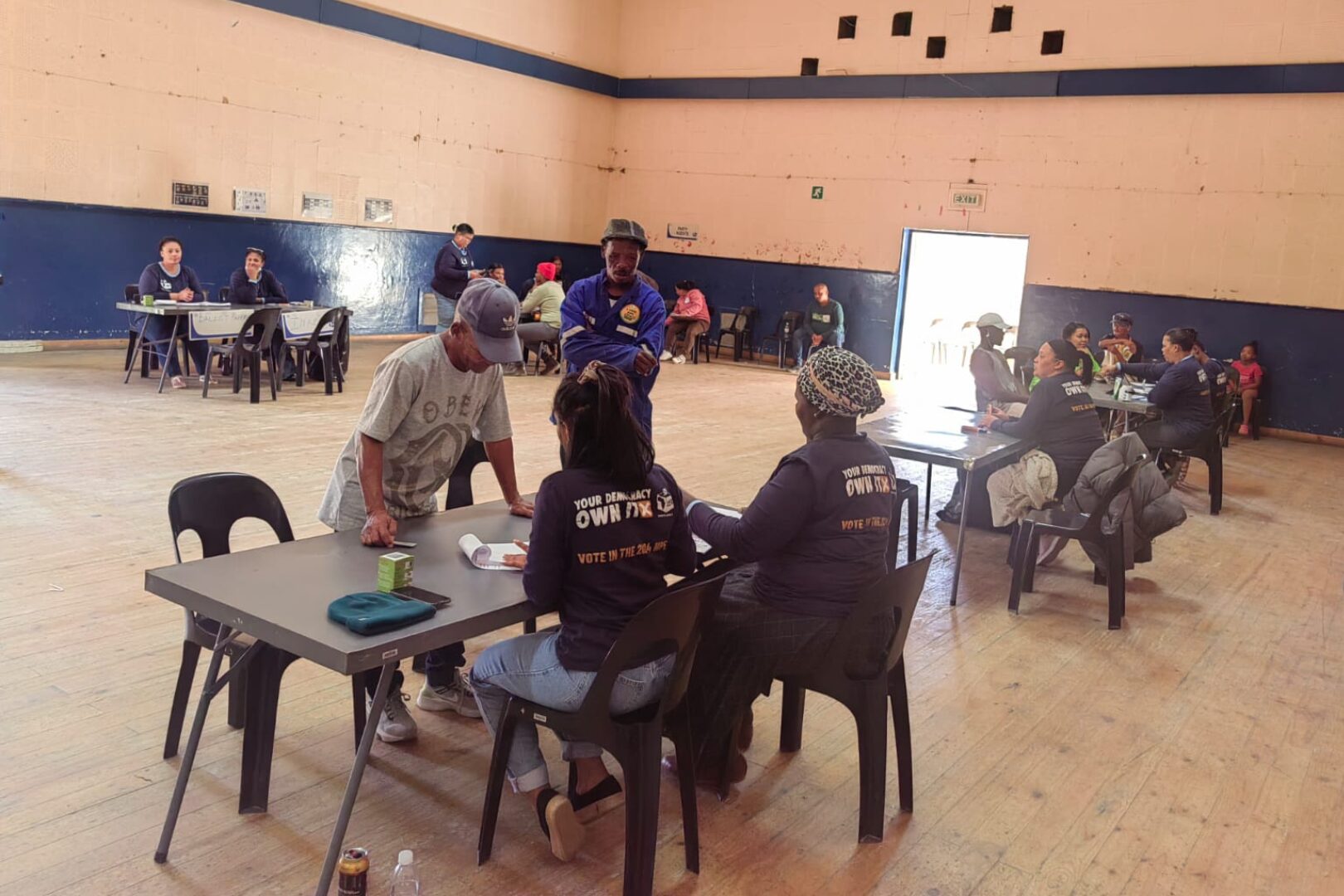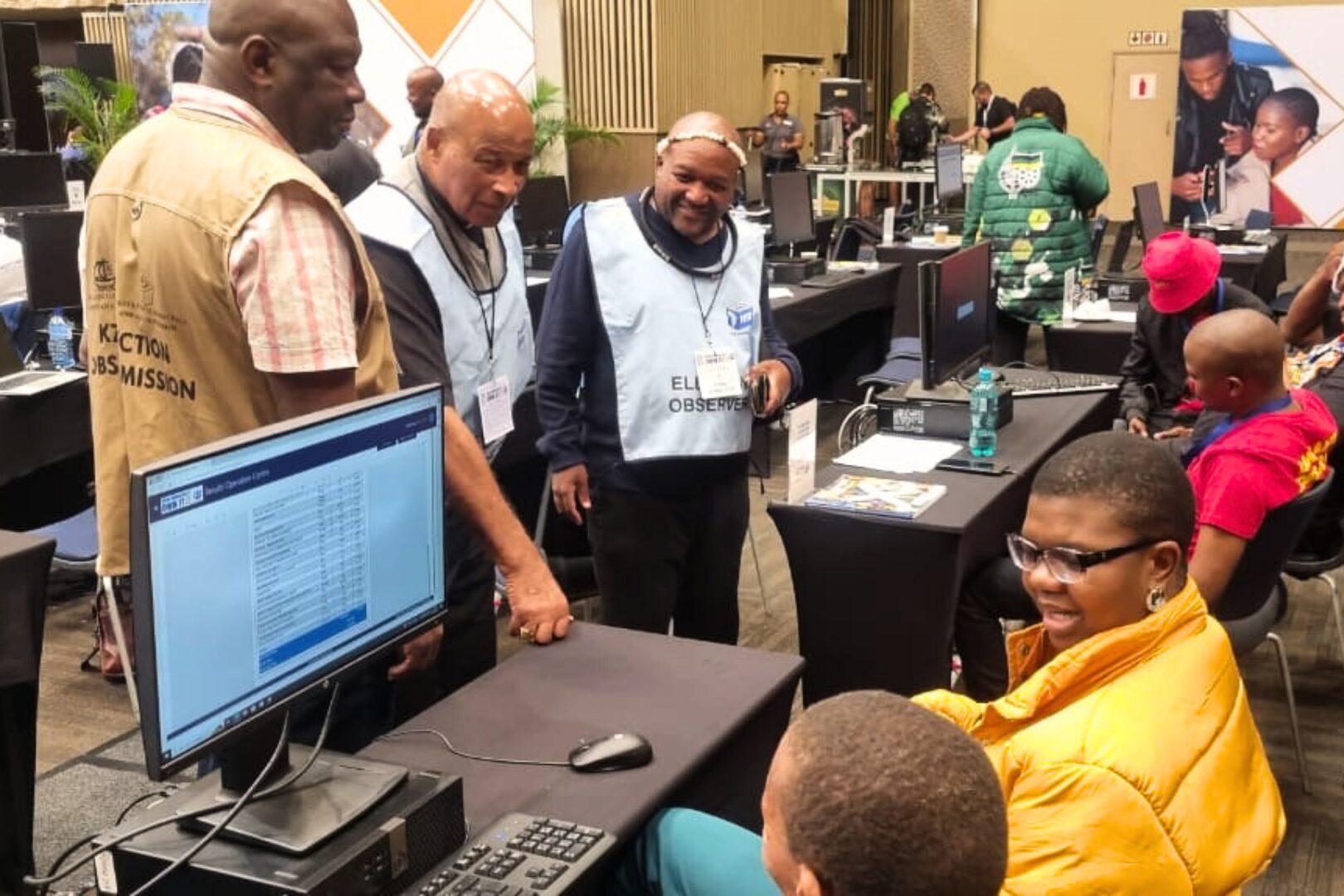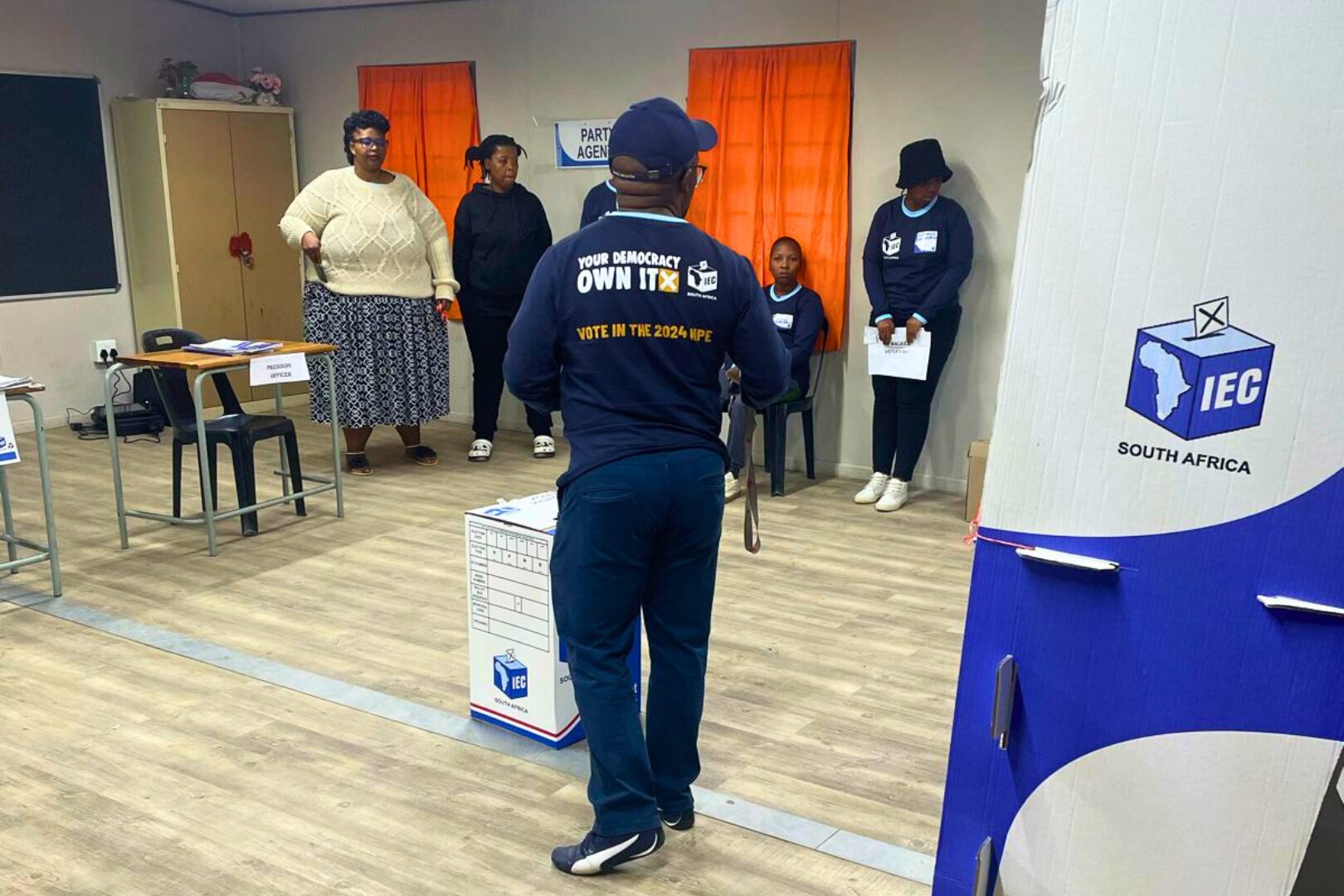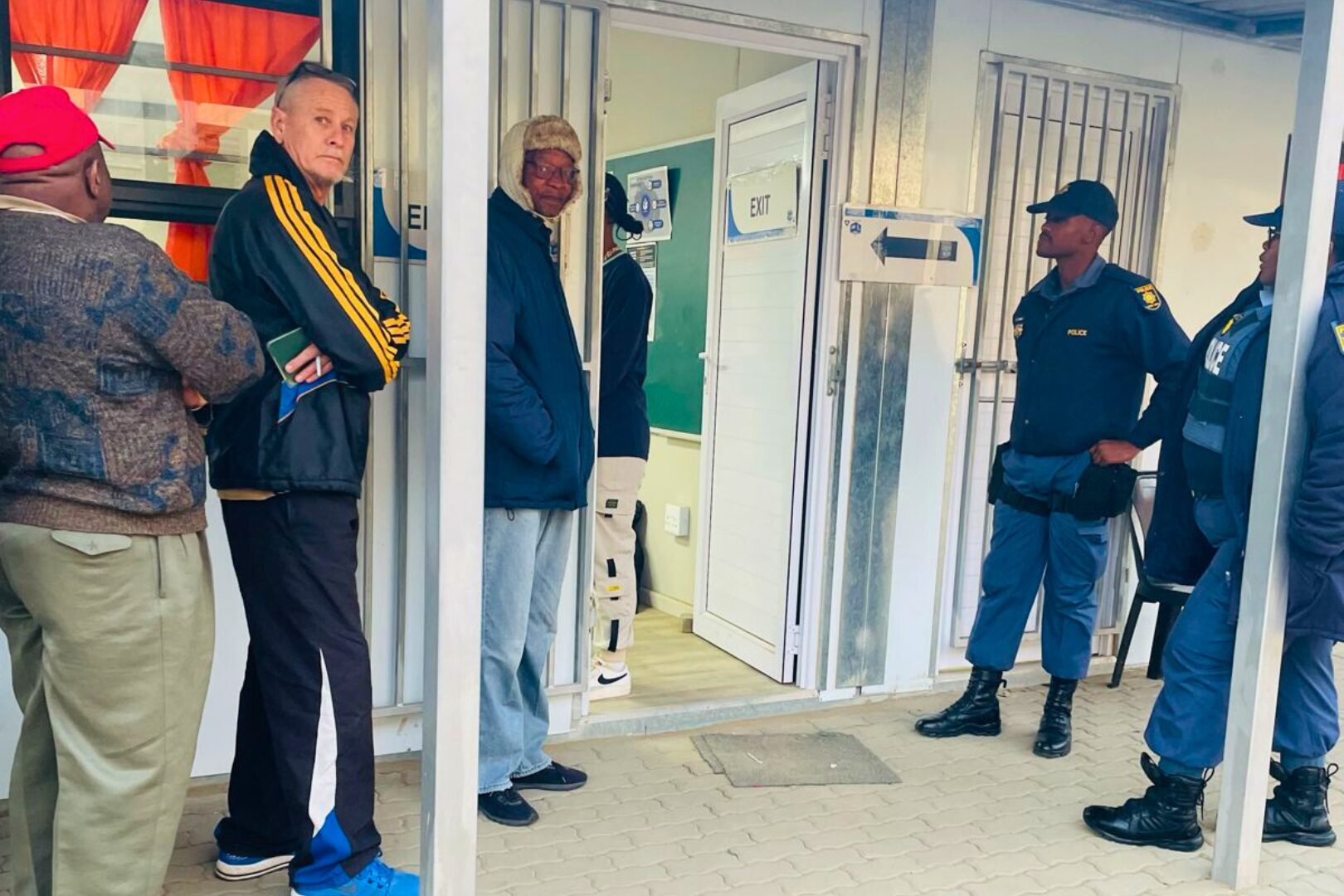- Lack of policies addressing fake news and cyber-bullying was prevalent, potentially influencing voters and candidates.
- Political parties campaigned at voting stations, creating an environment that could intimidate voters and lead to tensions.
- In urban areas, many voters arrived late in the day. The IEC managed this by allowing those in line after official hours to vote, with some stations remaining open into the night.
- Delays occurred due to issues with electoral equipment, connectivity, and shortages of key materials like ink and ballot papers. Load shedding also impacted station operations, delaying openings and causing slow voting.
- Section 24A, concerning voting at non-registered polling stations, was inconsistently applied. Some stations allowed voters to complete a required form, while others redirected them to their registered station.
- Observers were sometimes mistaken for party agents, with officials asking them to provide Annexure 4. This led to confusion across multiple provinces.
South Africa
29 May 2024

Powered by AHEAD Africa, elections in South Africa are monitored by
Resources
E-HORN's South Africa 2024 Election Observation Mission Report [EN]
ESN-SA's South Africa 2024 Election Observation Mission Report [EN]
KZNCC's South Africa 2024 Election Observation Mission Report [EN]
Africa Union South Africa 2024 Election Observation Mission Report [EN]
Recommendations
Our recommendations on South Africa elections based on our reports above and classified by thematic areas
Management and Procedures
- Ensure early debate and adoption of electoral law reforms in the next electoral cycle.
- Enhance collaboration with Electoral Authorities, Media, Judiciary, and Civil Society to provide technical support for implementing changes.
- Engage with the issuance of the Independent Electoral Commission (IEC)’s branded observer bibs/armbands to address conflict of interest concerns and prevent voter confusion.
- Ensure polling stations open on time, are adequately staffed and supplied, and include real-time monitoring for operational issues. Also increase polling streams at voting stations to reduce waiting times.
- Develop a logistical plan for distributing electoral materials based on anticipated voters per district, ensuring timely delivery and including backup systems like solar lights, pens, and ink.
- Improve voter education among Independent Electoral Commission (IEC) officials and train polling officials to manage voting stations effectively, addressing issues like long queues.
- Use separate color-coded ballot boxes for faster sorting, and ensure adequate voter management devices and backup internet connections at all stations.
- Increase transparency in vote counting by allowing more observation from nonpartisan groups and improving IEC communication about election safeguards.
Competition and Transparency
- The government should establish a regulatory framework to combat electoral fake news and cyberbullying.
- The Independent Electoral Commission (IEC) must revise canvassing regulations near voting stations to avoid intimidation.
- Conduct timely post-election reviews to address electoral challenges.
- Enhance security in volatile areas like KwaZulu-Natal to detect and respond to violence.
- Implement strategies to prevent election-related violence and collaborate with civil society for peaceful elections.
Inclusion and Participation
- Emphasise the importance of timely voting in future voter education workshops to avoid long queues.
- Consider a hybrid of digital voting and manual voter rolls for verification at polling stations.
- Advocate for compulsory voting for all citizens through electoral regulation changes.
- Foster community dialogue to improve understanding of the political context and enhance constitution accessibility.
- Intensify youth-targeted voter education campaigns and expand initiatives like the “We Are the People” Voters’ Festival using diverse media.
- Encourage political dialogue and coalition-building, providing platforms for smaller parties and independents.
- Review electoral laws to improve independent candidate inclusion and enhance party accountability with stricter finance regulations.
- Strengthen education on electoral law changes.
Main Findings
Pictures on the supported election
Discover all elections we support
Your one-stop-shop on South Africa elections
Default title

Stay informed with AHEAD Africa
Subscribe to our newsletter for the latest updates on electoral integrity efforts in Africa
This will close in 0 seconds




